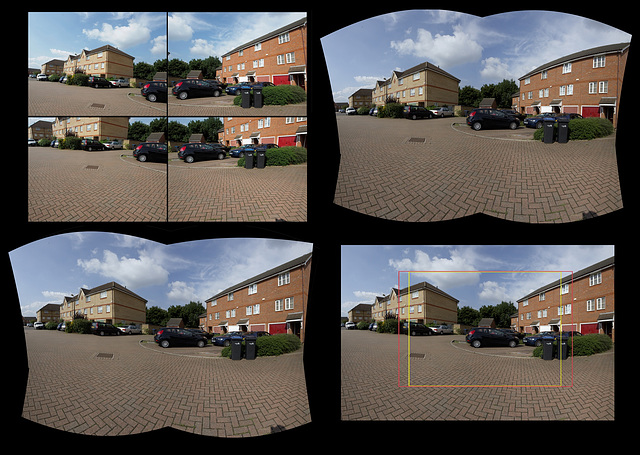Nodal Drift. How accurate do you need to be aligne…
Cetona
Cetona
Near Castelmuzio
Near Castelmuzio
Near Castelmuzio
Castiglione del Lago
Castiglione del Lago
Near entrance to Zion National Park
Rialto Bridge, Venice
Dolomites
Dolomites
Cortina in the mist
Panorama - Testing From Two Up / Two Down Horizont…
Vrsic Pass, Julian Alps
Vrsic Pass, Julian Alps
Prešeren Square, Ljubljana
Bar Cafe in Kongresni Square, Ljubljana
Bar Cafe in Ljubljana
Vrsic Pass, Julian Alps
Vrsic Pass, Julian Alps
Vrsic Pass, Julian Alps
Vrsic Pass, Julian Alps
Vrsic Pass, Julian Alps
Vrsic Pass, Julian Alps
Vrsic Pass, Julian Alps
Vrsic Pass, Julian Alps
Vrsic Pass, Julian Alps
Vrsic Pass, Julian Alps
Near Kranjska Gora, Julian Alps
Monument Valley
Monument Valley
Monument Valley
Zion National Park
Zion National Park
See also...
Authorizations, license
-
Visible by: Everyone -
All rights reserved
-
807 visits
How I Made Four Horizontal Frames...


Why two up/ two down horizontal shots with a wide angle lens is a good idea for natural looking shots using panorama stitching and why I like Micro Four Thirds so much for it.
- Keyboard shortcuts:
Jump to top
RSS feed- Latest comments - Subscribe to the comment feeds of this photo
- ipernity © 2007-2024
- Help & Contact
|
Club news
|
About ipernity
|
History |
ipernity Club & Prices |
Guide of good conduct
Donate | Group guidelines | Privacy policy | Terms of use | Statutes | In memoria -
Facebook
Twitter

Of course I need to tilt the camera up more than I did in the case shown above and a little less down but the overlap is enough that I easily can. In that respect the 4:3 format of Micro Four Thirds is better than the 3:2 of FX or DX but in more ways than I had expected.
I shot the four frames shown top left and combining them in PTGui got the result top right. The distortion in the building on the right is more the result of stitching 150° than the distortion in the lens. That was confirmed when I used my Sigma 12-24mm f4.5-5.6 EX DG on my Nikon D300 and had the same result even though that lens is remarkably distortion free.
When I take single frames I correct distortion in Photoshop and I am getting very skilled at doing it manually with the tools available, as indeed I did with the above as you can see from the stitch out of PTGui top right and my efforts with the Warp tool in Photoshop bottom left.
From Micro Four Thirds, four shots from a 12 mp camera stitched together as shown bottom right give me about 150° wide coverage, 6717 x 4305 or almost 29 mp after trimming to a rectangle and with a sharp lens edge to edge the result is magnificent.
The yellow frame shows approximately what one shot would have covered with the same 12mm lens and the red one my Sigma 12-24mm f4.5-5.6 EX DG at 12mm on my Nikon D300. As expected, it is no taller due to the reduced 3:2 format but, to my utter shock, it is not much wider either. [Note - 12mm on Micro Four Thirds is equivalent to 24mm on full frame, 12mm on FX is equivalent to 18mm on full frame, so one would expect more of a difference.
A larger copy of the final result is at Panorama - Testing From Two Up / Two Down Horizontal Frames and you can see it bigger still if you select See All Sizes from More Options near the top right of the page.
So, summing up:
Four Micro Four Thirds shots over two rows gives a nice format result for 150° wide
Even from a 12mp camera the quality is superb with a decent lens
A 12 mp camera can give you results if you do a good job of a panorama approaching the quality of a single frame from a Nikon D800E or medium format digital cameras like a Pentax 645D or even a Hasselblad
I am not interested in panoramas which are freaky over huge angles, merely landscape pictures and the occasional street scene more in keeping with what one's eye takes in. All too often that is more than a single rectilinear lens can muster, however wide it is.
I came back from a visit to the South West USA in 2011 and became aware of panorama photography shortly after. If only I had had that technique in my toolkit when I visited the Grand Canyon or Zion National Park. I got some great shots there but being able to cover 150° horizontally or more instead of only 100° would have been a definite plus. Since then I have been able to take up to nearly 180° which I did with this shot of the Vrsic Pass, Julian Alps in Slovenia and there have been a few other successes where none of that freakiness is apparent that you so often see in wide panoramas. Of course, it is a lot easier in that respect with landscapes than anything else but it had not occurred to me to shoot a double row as in the case shown above. I think it makes a big difference. The results from 150° coverage can look like a conventional picture that could grace a wall, which is what I wanted.